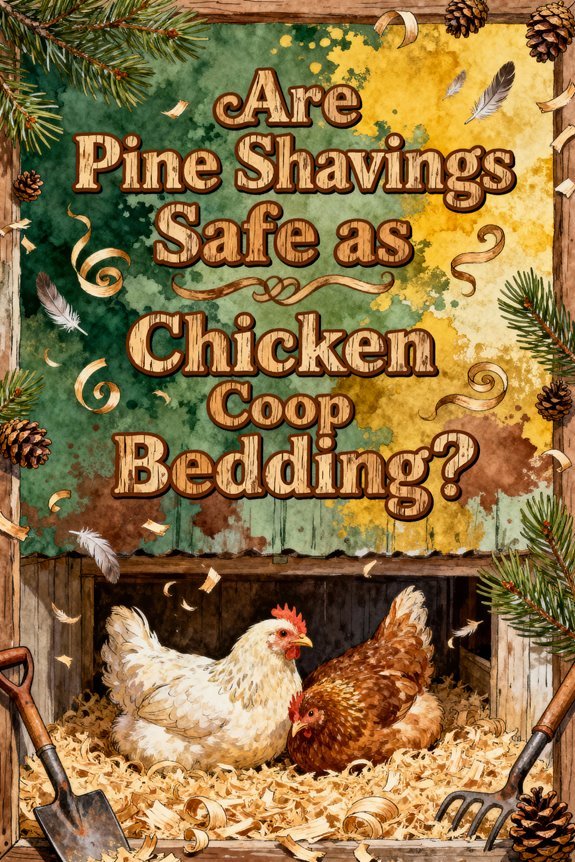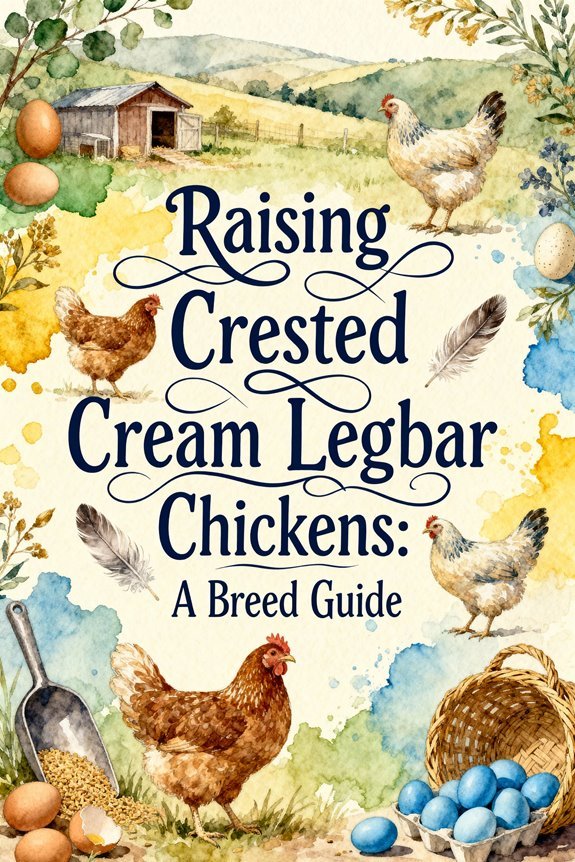How to Tell Male and Female Chickens Apart
You’ll find several key anatomical distinctions between male and female chickens through observation of physical characteristics. Males possess larger combs and wattles, prominent spurs, and vibrant plumage with distinctive hackle and sickle feathers. Females maintain smaller proportions, muted coloration, and minimal spur development. While initial gender assessment can occur at hatching through head spot size, accurate determination improves markedly as the birds mature and develop secondary sex characteristics.
Physical Body Differences You Can See
When identifying the sex of chickens through physical characteristics, several prominent anatomical differences become apparent upon visual inspection. You’ll notice roosters exhibit more substantial body mass with broader shoulders and thicker necks, while hens maintain a more compact, rounded physique. In size comparison, males consistently present larger proportions across their anatomical structure. Offering cracked corn at bedtime can help you observe these physical differences as chickens gather to eat.
Posture differences provide clear distinguishing markers, as roosters maintain an assertive, upright stance with pronounced chest protrusion and elevated head carriage. You’ll observe males demonstrating thicker, more muscular legs with prominent spurs, designed for territorial defense. Females, conversely, display a lower center of gravity with a less commanding presence. Males also develop larger, more vibrant combs and wattles, contrasting with the smaller, paler features typical of hens. The most reliable indicator emerges between weeks 10-15 when male chicks develop distinctive pointy hackle feathers. Both sexes can be offered treats like plums, but remember to remove the toxic plum pits to prevent poisoning.
Distinctive Feather Patterns and Colors
Although feather characteristics vary among breeds, distinct sexual dimorphism manifests through observable patterns and coloration in chickens. You’ll notice females exhibit faster wing feather development with alternating long-short patterns, while males develop more uniform feather lengths. Male plumage displays vibrant, iridescent hues with pronounced greenish-black lusters and distinctive lacing, particularly in Golden Laced, Duckwing, and Mille Fleur varieties.
Males develop three specialized feather types: pointed hackles around the neck, elongated saddle feathers at the rump, and curved sickle feathers in the tail. Females, by contrast, present softer, muted feather coloration with less distinctive patterning, supporting their camouflage needs. Wing feather structure also differs, with females showing more pronounced curvature and longer secondary feathers, even in young birds. This difference in feather development is controlled by the K gene inheritance, which determines the rate of feather growth between males and females.
Comb and Wattle Development
Since combs and wattles serve as key anatomical indicators of sex differentiation in chickens, you’ll find these fleshy protuberances particularly useful for identification. You’ll notice that roosters develop especially larger, more vibrant structures than hens of the same breed and age, with differences becoming apparent around three months.
When examining your birds, observe that male specimens exhibit accelerated comb size development and more pronounced wattle color as they approach sexual maturity. You’ll find their combs and wattles are typically waxier and more prominent than females’. These features play a vital role in mate selection and attraction. However, be aware that breed variations can affect these characteristics. While checking your flock, remember that bright, smooth structures indicate good health, while pale or shriveled appearances may signal underlying issues. For definitive sexing, combine these observations with other physical indicators.
Leg Structure and Spur Growth
Beyond the distinctive features of combs and wattles, a chicken’s leg structure and spur development offer reliable indicators for sex determination. While both sexes share similar skeletal anatomy, including the femur, tibia, and hock joint configuration, you’ll find notable differences in their spur characteristics.
In males, spurs emerge as prominent, sharp, bony projections from the shank by several months of age, continuing to grow throughout their lifetime. These conical structures serve defensive and competitive purposes during mating. Female chickens typically display minimal to no spur development, though some may develop smaller, duller spurs later in life. While shank coloration varies by breed in both sexes, you’ll want to focus on spur size, angle, and sharpness when determining sex, particularly in birds over six months old. The leg skeleton’s connection to the pelvic girdle and hip bones provides the structural foundation that supports these sex-based differences in spur development.
Understanding Behavioral Signs
While physical characteristics provide reliable indicators of a chicken’s sex, behavioral patterns offer equally valuable diagnostic criteria for differentiation. You’ll observe behavioral dominance in males through assertive posturing, protective stances, and competitive interactions during feeding and roosting. Males exhibit vocal assertiveness through distinctive crowing, typically emerging between 6-12 weeks of age, and high-pitched tidbitting calls when uncovering food sources. Males generally develop larger combs as they mature into adulthood, setting them apart from their female counterparts. Proper bedding like heat-treated pine can help maintain optimal health conditions for observing natural behaviors.
Females display characteristic submissive behaviors, significantly the mating-readiness squat when approached. You’ll notice males initiate more social interactions, demonstrating leadership through strutting, feather ruffling, and courtship displays. Early indicators include males standing taller with direct eye contact, while females maintain more reserved dispositions. Wing feather patterns in young females show alternating long and short feathers, unlike the uniform pattern in males. These behavioral distinctions, when combined with physical markers, provide thorough sex identification criteria.
Maturation and Growth Timelines
Understanding the maturation timeline of chickens requires tracking five key developmental markers: feather growth, facial features, body mass, sexual characteristics, and plumage alterations.
You’ll notice feather development begins around week one with secondary feathers, followed by distinct sexual dimorphism in hackle and saddle feathers by 12-16 weeks. Males develop pointed neck and back feathers, while females retain rounder, cushion-like plumage. Female chicks typically show alternating wing lengths in their early development. Facial features diverge early, with males showing larger combs and wattles by 3-4 weeks. Body mass differentiation becomes apparent from week 8, as males grow faster with broader frames. Sexual maturity indicators emerge between 16-24 weeks – males begin crowing and develop spurs, while females start egg production. Watch for breed-specific plumage changes, though males consistently display more vibrant coloring and longer sickle tail feathers. Male chicks can be identified by their larger head spots at hatching compared to females. For optimal accuracy in determining gender, it’s best to wait until chicks reach four to five weeks of age before making initial assessments.






